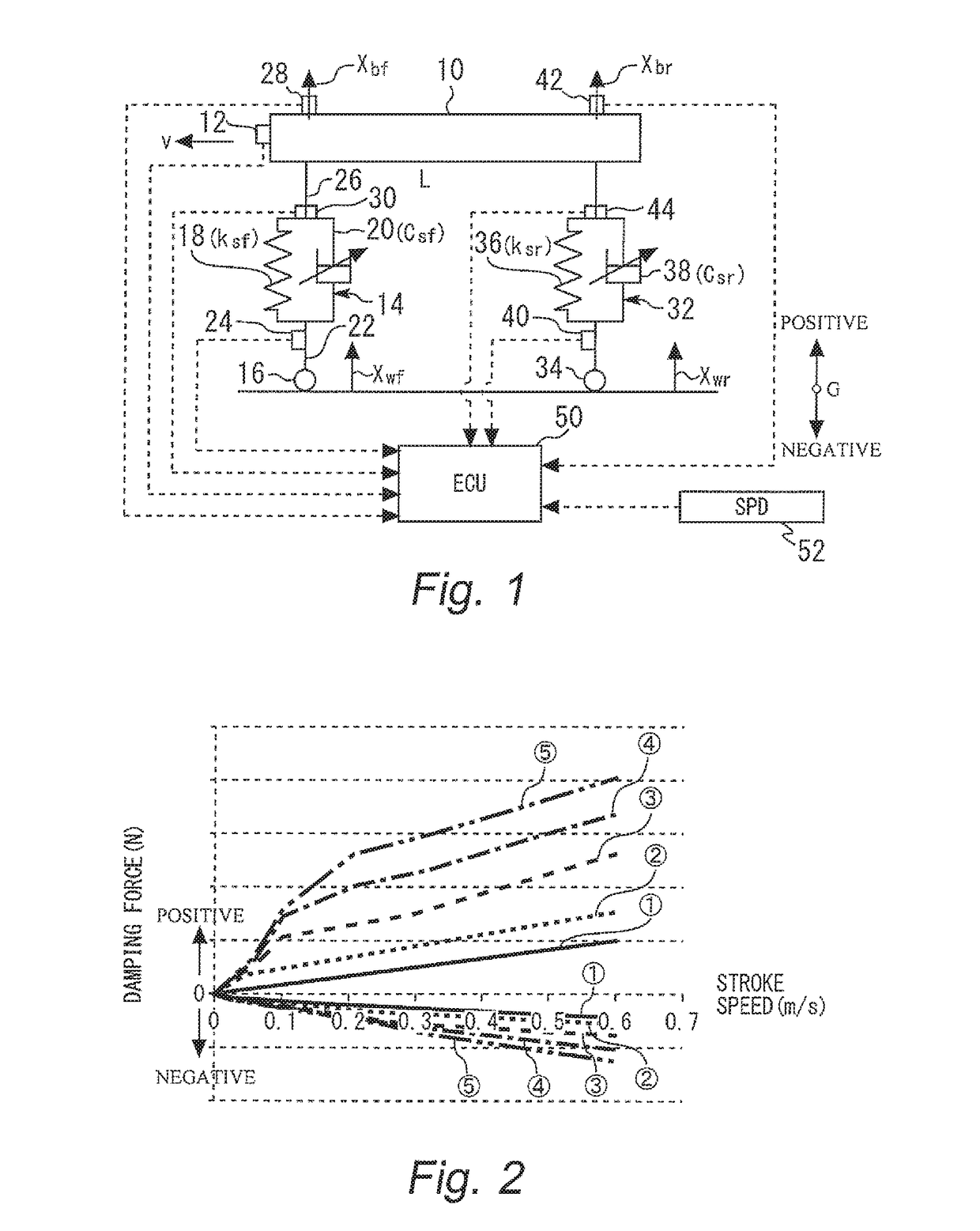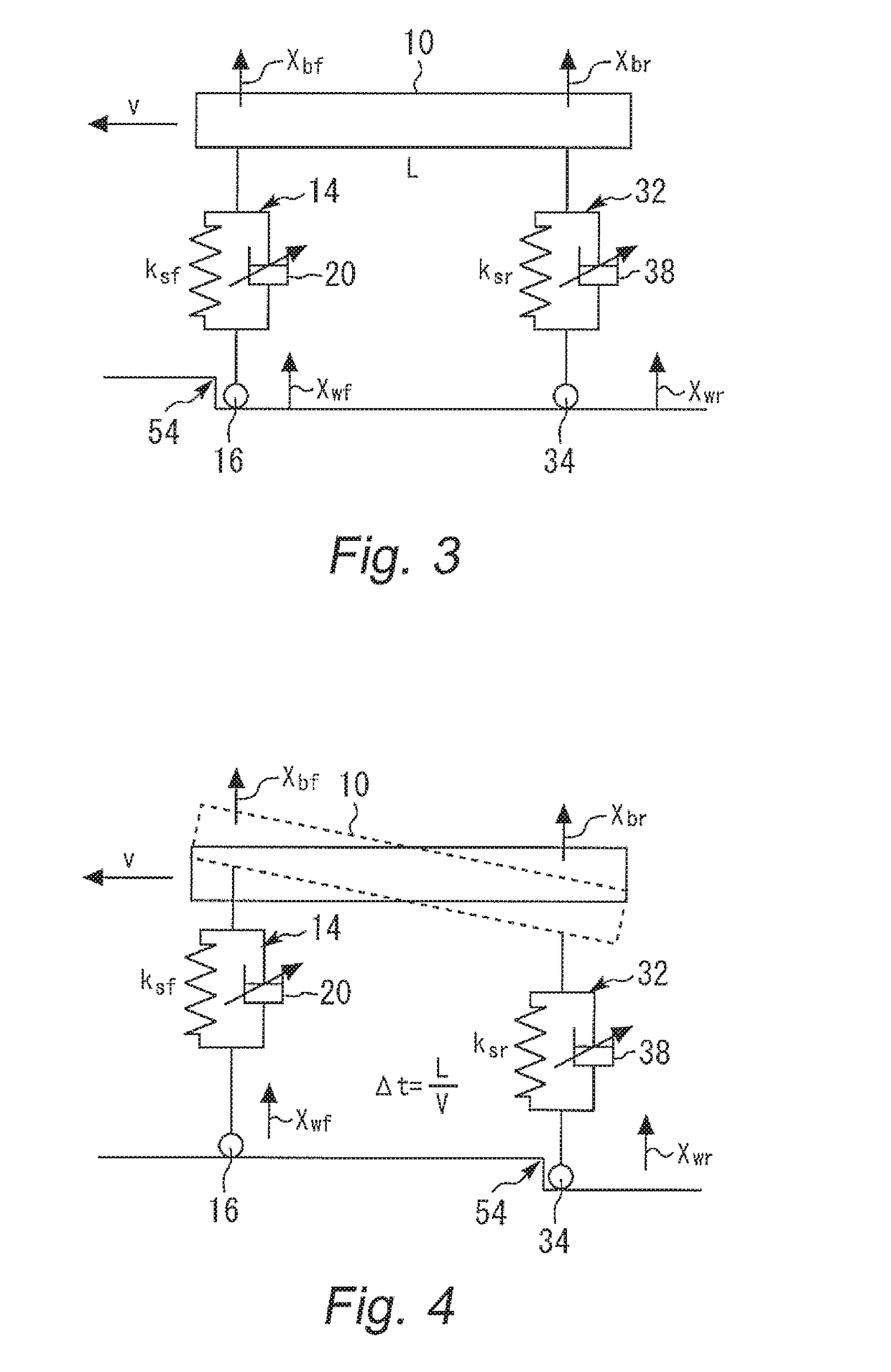Control device for vehicle suspension
a control device and vehicle technology, applied in the direction of resilient suspensions, springs/dampers, vehicle components, etc., can solve the problems of deteriorating the ride comfort of the vehicle, strong pitch behavior likely to occur, significant sprung mass behavior on the rear wheel side, etc., to achieve stable vehicle behavior and comfortable ride
- Summary
- Abstract
- Description
- Claims
- Application Information
AI Technical Summary
Benefits of technology
Problems solved by technology
Method used
Image
Examples
first embodiment
Characteristics Of First Embodiment
[0059]However, according to the control in the comparative example described above, when the rear wheel 34 goes over the rising point 54 on the road surface at the time t0, the high sprung mass acceleration 60 inevitably occurs for a short time. On the other hand, according to the present embodiment, it is possible to prevent such the high sprung mass acceleration from occurring, by switching the damping coefficient Csr for the rear wheel 34 to the soft-side value at the same time as the rear wheel 34 reaches the rising point 54.
[0060]FIG. 6 is a timing chart for explaining a vehicle behavior in a case where the control according to the present embodiment for achieving the above-mentioned function is applied to the shock absorber 38. According to the present embodiment, as shown in the third part from the top, the damping coefficient Csr regarding the rear wheel 34 is switched from the hard-side value to the soft-side value at the time t0 when the ...
modification examples of first embodiment
[0088]In the first embodiment described above, the control current for the shock absorber 38 for the rear wheel 34 is switched when the time period Δt=L / v has elapsed after the front wheel 16 reaches the rising point 54 on the road surface. However, the timing for the switching can also be determined by taking a delay time of an actuator or the like into consideration. That is, if there is a delay time Td from the time when the ECU 50 outputs the switching command to the time when the damping coefficient Csr is actually switched, the ECU 50 can output the switching command at a timing when a time period “L / v-Td” has elapsed after the front wheel 16 reaches the rising point 54.
[0089]In the first embodiment described above, the left and right front wheels are not discriminated, and the left and right rear wheels are not discriminated. However, the determination of whether or not the front wheel 16 goes over the rising point 54 and the switching of the damping coefficient Csr regarding...
PUM
 Login to View More
Login to View More Abstract
Description
Claims
Application Information
 Login to View More
Login to View More - R&D
- Intellectual Property
- Life Sciences
- Materials
- Tech Scout
- Unparalleled Data Quality
- Higher Quality Content
- 60% Fewer Hallucinations
Browse by: Latest US Patents, China's latest patents, Technical Efficacy Thesaurus, Application Domain, Technology Topic, Popular Technical Reports.
© 2025 PatSnap. All rights reserved.Legal|Privacy policy|Modern Slavery Act Transparency Statement|Sitemap|About US| Contact US: help@patsnap.com



